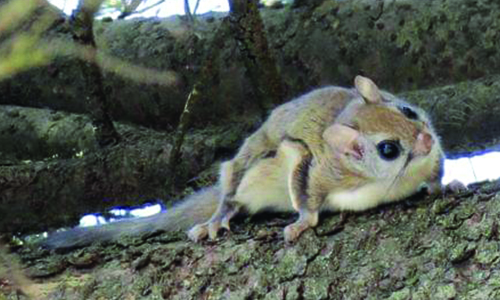
Myrtle Beach, South Carolina welcomes millions of visitors annually to the seaside paradise. But the area is also home to some unique full-time residents, albeit it in much smaller numbers.
The natural beauty of the Grand Strand, the 60-mile stretch of coastline that surrounds Myrtle Beach, features a diverse landscape that includes the Atlantic Ocean and Intracoastal Waterway, which provide saltwater and freshwater estuaries for a long list of aquatic animals. The wetlands, woodlands, salt marshes, and sandhills also serve as habitat for a wide range of species.
Guests at Compass Cove Oceanfront Resort can find plenty of places to see, photograph and even interact with the various protected and endangered species along the Carolina coast. From rare birds in the air to sea creatures in the deep, the Myrtle Beach area serves as a safe haven for a wide variety of life forms. Here are five of the most unique species and where you can catch a glimpse of them:
American Alligator: The alligator is no longer endangered but it is still protected, although a recent population boom has increased harvesting opportunities for licensed hunters. South Carolina is home to some of the nation’s largest gators due to the abundance of food and habitat along the coast. Today they are so common you are likely to spot them on lakes, ponds, and even golf courses. See them in the wild near the causeway at Huntington Beach State Park, or in a controlled environment at Alligator Adventure in North Myrtle Beach.
Carolina Northern Flying Squirrel: If you thought Rocky the Raccoon was only a cartoon character, think again. There really are squirrels that can fly, or at least soar through the air, and the remaining species are heavily concentrated in the Carolinas. These small but powerful squirrels can glide from tree to tree over great distances using wing-like flaps under their front legs. Today they can be spotted in heavily wooded areas like golf courses and wildlife management areas.
Loggerhead Sea Turtles: These majestic creatures have been laying their nests along the Carolina coast for millions of years, but rapid coastal development has eliminated much of their habitat. This is why any resorts and beach homes turn their lights off at night to provide a more inviting place for the turtles to come ashore and lay their eggs. Turtles bury their eggs in dense sand along the dunes, and hatchlings dig their way out and instinctively crawl to the ocean. It’s amazing to watch and hatching events are often open to guests at Myrtle Beach State Park.
Red-Cockaded Woodpecker: These beautiful birds have seen their numbers drop from 1.6 million in 1970 to an estimated 14,000 today due to the loss of habitat. The deforestation along the coast, especially long-leaf pines, has seen a sharp decline of the woodpeckers that landed them on the endangered list. Recent efforts to preserve long-leaf pines and install nest boxes in wildlife refuges have made the Grand Strand a key habitat for the woodpeckers. Visit popular birding spots like the Francis Marion and Sumter National Forests to see them up close.
Venus Flytrap: This rare carnivorous plant grows only in the Carolina wetlands in the U.S., where has been endangered due to decreased habitat and poaching. Featuring unique mouth-like petals that open to attract insects and close to ingesting them, Venus flytraps can be seen growing in the wild at the Lewis Ocean Bay Preserve just inland of Myrtle Beach. Hiking trail access is available off International Drive but keep your distance. The penalties for poaching or damaging a Venus flytrap is severe.
These are just five of the most interesting endangered and protected species on the Grand Strand, but you can see dozens if you know where to look. Be sure to book your reservations for the best habitat for Myrtle Beach vacationers at Compass Cove Oceanfront Resort.
